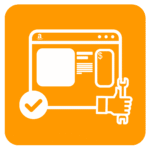In a world where global trade moves at lightning speed, traditional freight forwarding systems often fail to keep up with the complex demands of modern supply chains. Manual documentation, lack of real-time tracking, inefficient communication between stakeholders, and non-integrated operations are just a few of the challenges that hinder freight forwarders from providing fast, accurate, and transparent service.
Enter freight forwarder software solutions—intelligent, digital platforms designed to streamline every stage of the freight forwarding process. From quote generation and shipment tracking to compliance and invoicing, these systems are redefining the way global shipping is managed. With the growing need for automation and visibility across supply chains, such software is becoming a critical asset for freight forwarders, logistics companies, and global shippers alike.
This article explores how freight forwarder software works, the benefits it offers to businesses, how to build custom solutions, and real-world use cases that demonstrate its transformative impact. Whether you’re a logistics entrepreneur or an enterprise looking to digitize your freight operations, this guide will help you understand what makes freight forwarder software an indispensable tool in today’s shipping landscape.
Understanding Freight Forwarder Software: What It Is and Why It Matters
Freight forwarder software is an integrated platform that enables the automation and management of various logistics operations such as booking, documentation, shipment tracking, rate management, customs clearance, and customer communication. These systems help freight forwarders coordinate with shippers, carriers, customs brokers, and warehouses through a centralized, digital dashboard.
What makes this software so essential is its ability to consolidate fragmented processes. Rather than relying on spreadsheets, emails, and paper documents, freight forwarders can operate on a unified system that handles all major workflows, saves time, reduces errors, and improves customer satisfaction.
With the rise in global e-commerce, increased compliance requirements, and demand for real-time data, freight forwarder software is no longer optional—it’s a necessity for operational excellence and long-term scalability.
How Freight Forwarder Software Works: A Deep Dive into Features and Workflow
A well-built freight forwarder software platform typically follows an end-to-end workflow that mimics the life cycle of a shipment. Here’s how the system functions at each stage:
1. Quotation and Booking Management
The software allows freight forwarders to provide instant, accurate quotes based on various shipping parameters—origin, destination, cargo type, volume, and mode (air, sea, road, rail). Once a client accepts the quote, the system automatically converts it into a booking and begins the shipment workflow.
These features are often integrated with rate management tools that fetch live pricing from multiple carriers. This eliminates manual lookup, ensures competitive pricing, and speeds up customer conversion.
2. Shipment Planning and Documentation
Once booked, the system generates the required documents such as the bill of lading, commercial invoice, packing list, and shipping instructions. Some software also integrates digital signature functionality and document templates to ensure compliance and consistency.
For freight forwarders dealing with multi-leg or intermodal shipments, the software enables complex route planning, carrier allocation, and cargo consolidation, all while maintaining visibility across legs.
3. Real-Time Tracking and Visibility
The tracking feature is the most critical for customers. Through integrations with carriers and IoT devices (like GPS trackers), the software provides real-time updates on shipment location, delays, handovers, and estimated time of arrival.
Dashboards display the current status, route maps, and alert notifications for exceptions (such as customs holds or transit delays). This visibility empowers freight forwarders to proactively manage issues and keep clients informed.
4. Customs and Compliance Automation
Compliance with international trade regulations is complex and dynamic. Modern freight software automates this by integrating tariff databases, HS codes, and country-specific compliance requirements.
The platform checks for regulatory mismatches and provides early alerts. For example, if a shipment to the EU lacks CE certification, the system can flag the issue before cargo is dispatched. This reduces delays, penalties, and legal risks.
5. Billing, Invoicing, and Payments
Automated invoicing is generated based on the shipment’s quote, actual charges, and any surcharges. The software can handle multi-currency billing, tax calculations, and even client-specific rate agreements.
Many freight software platforms integrate with accounting tools like QuickBooks or offer built-in ERP capabilities. This streamlines cash flow, reduces billing errors, and supports better financial forecasting.
6. Customer Portal and Communication Tools
Clients can access their own dashboard or portal to track shipments, download documents, view invoices, or chat with customer support. This self-service functionality reduces the load on operations teams and improves customer experience.
Advanced systems also allow for white-labeling, giving freight forwarders a chance to build brand presence through personalized customer interfaces.
Business Benefits of Freight Forwarder Software
The impact of a well-implemented freight forwarder solution goes far beyond operational convenience. It directly affects the bottom line, customer satisfaction, and long-term competitiveness. Here are the top business benefits:
1. Operational Efficiency and Cost Reduction
By automating repetitive tasks—quote generation, documentation, tracking, and invoicing—companies can reduce human errors and cut down administrative costs. Faster workflows translate into faster shipments and better resource utilization.
2. Improved Accuracy and Compliance
Regulatory fines, misrouted shipments, or incorrect billing can be expensive. With built-in validation checks, auto-filled data, and integration with global trade databases, the software ensures high levels of accuracy and reduces non-compliance risks.
3. Enhanced Visibility and Transparency
Customers today expect real-time updates. Freight software provides visibility across the shipment journey, increasing client trust and satisfaction. It also empowers internal teams to act quickly when issues arise.
4. Scalability and Competitive Edge
As logistics businesses grow, managing increasing volumes manually becomes unfeasible. Freight forwarder software scales effortlessly—supporting multi-location operations, team collaboration, and global trade. This gives companies a competitive edge in bidding for larger, more complex contracts.
5. Data-Driven Decision Making
With centralized data from every shipment, business leaders can analyze trends, monitor KPIs, and make strategic decisions. Whether it’s identifying profitable trade lanes or negotiating better carrier rates, data becomes a powerful asset.
How to Develop a Custom Freight Forwarder Software Solution
While many off-the-shelf platforms exist, businesses often prefer to invest in custom logistics software development to tailor the solution to their specific processes, branding, and market needs. Here’s a step-by-step breakdown of how to develop one:
1. Business Requirement Analysis
The development begins by mapping existing workflows, identifying pain points, and outlining goals. What modules are needed—air, ocean, LTL? Should the system support integrations with customs APIs, warehouse systems, or accounting tools?
Consulting with logistics teams, sales reps, and IT ensures the software architecture aligns with both front-end and back-end needs.
2. UI/UX Design
A successful freight platform must be user-friendly and intuitive. Developers and designers collaborate to create wireframes and user flows for dashboards, booking screens, tracking modules, and customer portals. The goal is to minimize learning curves and support real-time interaction.
3. Modular Architecture Development
Using a modular architecture enables scalable development. Common modules include:
- Booking & Quotation
- Document Management
- Shipment Tracking
- Customer Portal
- Billing & Invoicing
- Notifications & Alerts
- Analytics & Reporting
These modules are developed using web technologies, microservices, and cloud platforms like AWS or Azure for scalability.
4. Integration with Third-Party Systems
A robust freight software system integrates with external APIs—carrier systems (Maersk, DHL, FedEx), customs platforms, GPS hardware, ERP tools, and payment gateways. These integrations ensure data flow is seamless and that users don’t need to switch between platforms.
5. Security and Compliance
The software must comply with data protection laws (GDPR, CCPA) and industry standards. This includes SSL encryption, role-based access control, secure hosting, and regular audits. Businesses handling sensitive trade and financial data cannot compromise on security.
6. Testing and Deployment
After development, the software undergoes functionality, stress, and user acceptance testing. Once validated, it’s deployed either on-premise or in the cloud. Post-deployment support includes training sessions, documentation, and performance monitoring.
Real-Life Use Cases of Freight Forwarder Software in Action
Flexport
Flexport is a tech-enabled freight forwarder that has disrupted the industry with its fully digital platform. Their software provides shippers with real-time visibility, predictive analytics, and end-to-end logistics control. Through automation and centralization, Flexport has dramatically improved shipping timelines and customer transparency.
Kuehne + Nagel’s KN Login
Global logistics giant K+N offers a digital platform called KN Login. It allows clients to book, manage, and track shipments in real time. This software integrates IoT sensors for condition monitoring and offers predictive alerts for possible shipment delays.
Freightos WebCargo
Freightos offers a platform that automates rate management, bookings, and air cargo tracking. Airlines and forwarders use it to streamline quote-to-book processes and reduce turnaround times. Its API-first architecture also allows integration with in-house systems.
Final Thoughts: The Future of Freight Forwarding Is Digital
As global trade becomes more complex, the need for real-time data, automation, and customer-centric services is greater than ever. Freight forwarder software solutions are not just tools—they’re strategic enablers that help logistics businesses evolve from manual service providers to intelligent, data-driven enterprises.
With the right development partner and a clear vision, companies can build tailored systems through custom logistics software development that streamline operations, improve decision-making, and scale effortlessly in a competitive market.
In the end, it’s not just about moving goods from point A to B—it’s about delivering value, efficiency, and innovation at every step of the journey.


